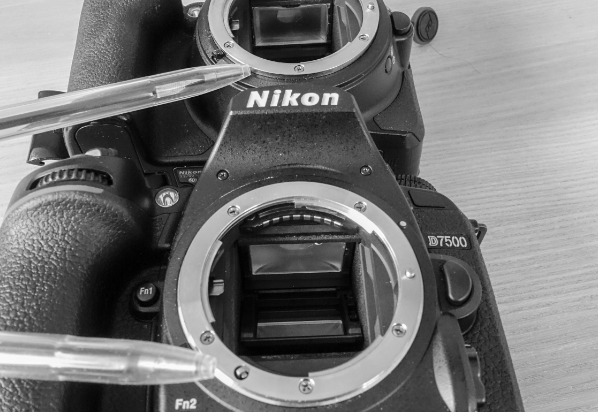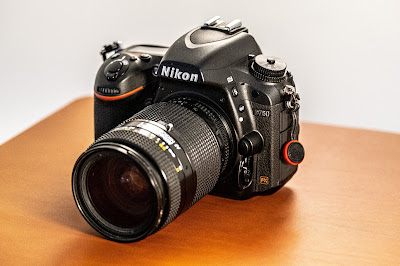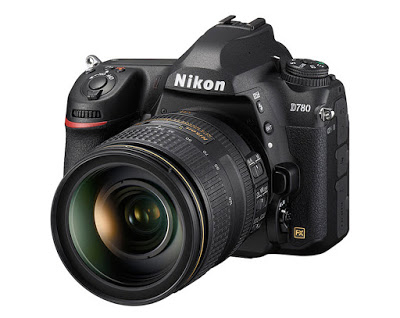Yes, the Nikon D5600 is not a modern camera. It came out in November 2016 and here in 2023 it is about 7 years old! That is a long time in this day and age, looking at the expedient development of mirrorless cameras with backlit sensors and image stabilisation and what not.
However, if you are willing to live with a camera that will not make the heads turn when you flash it in the local café, you may find that you get a camera that takes some excellent pictures and does so offering a wonderfully easy to use sets of dials and buttons. And for a price that does not break the bank.

But let’s have a look at some strongholds and some shortcomings, based upon my personal experience after owning and using this solid camera for more than a year.
Strong features
Price
Maybe the biggest advantage of the D5600 is the price: 530 EUR new with kit lens (Europe, April 2019) and 389 EUR for a camera body only version. That is less than what a battery grip costs for some mirror-less cameras! And if you further can live with a model that is a little older (the D5300) but with many of the same features as the D5600, then I have found it used on e-bay for 230 EUR and you have entered the world of photography on a budget.
A very good sensor still
It is still a very good sensor that sits in this camera, also compared to standards of today. It has 24 megapixels which is still very common for cropped sensor cameras (e.g. most of the Fujifilm x-series cameras). Despite an anti aliasing filter that it has become fashion to remove because some say it affects picture sharpness, it still produces some very great pictures with Nikon’s well known picture quality and color rendition. And you can shoot both RAW and JPG, and the JPGs are fine as well.
Ergonomics and user friendliness is top
Maybe what I enjoy the most with the D5600 is that the camera body is very light and the grip is deep. Some say the grip is not tall enough and that their pinky lacks a place to rest, but I have a very big hands and I have never had that as an issue. The camera is so light that holding it for hours has never been an issue for me. The user interface it the “good old” Nikon one, and although the D5600 lacks a front dial, the D5600 interface is very similar to other Nikon models, so if you speak Nikon, the D5600 is very easy to use. And if you don’t, you will quickly get familiar with the controls.

The LCD screen is a bonus
Maybe the LCD screen by today’s standards does not have the best resolution, but the screen is pivoting, touch sensitive, and it reacts – even compared to a modern smartphone – fairly quick.

Further, it can turn “inwards” when not used, i.e. protected from scratches and guaranteed not to bother you when using the viewfinder. This is a good thing when you shoot at night or throw the camera into an ordinary bag with other stuff – you don’t have to worry about that side of the camera!

Crop factor = “longer” lenses
The fact that the D5600 sensor is a cropped sensor (APS-C) means that the length of all lenses you attach to the D5600 are multiplied by 1.5. My 70-300mm Tamron lens suddenly becomes a 450mm at the far end which enables me take loads of pictures of birds sitting at the bird-feeder in the far end of my garden. So although some photographers claim that only full frame sensors will do, it is worth noticing that a cropped sensor also has some capabilities that full frame does not offer.
The full frame versus cropped sensor debate is one of the oldest in the photo community, and I do not want to add to the discussion, but for an entry level camera like the D5600 with 24 megapixels, I think you will find that you have plenty of resolution and picture quality for both social media and an occasional print.
Nikon glass and Nikon f-mount
The Nikon F-mount has been around since Donald duck was an egg, and there is literally thousands of lenses available for the Nikon D5600 and its f-mount. Shop around on e-bay and the local flea market, and you will be able to find some cheap vintage glass for your D5600, provided you are not afraid of manual focus. And the good thing is that if you later decide to upgrade to a higher level camera, then much of your glass can be reused. You can also find some new glass at a fair price – Nikons kit lens is a good start, and a 35mm prime lens can be achieved brand new for a reasonable price.

It is not a mirror-less
Yes it is a strange headline. But after going mirror-less also, I have come to learn to appreciate some of the features of the D5600 that I miss with the mirror-less cameras:
Battery life is awesome! As the D5600 has an optical viewfinder (and not an electronic one that needs to be powered like a tv-screen), the power consumption of the D5600 is very low, both when it sleeps and when it is switched off. I have my D5600 lying in the windowsill for weeks for an occasional bird shot without charging. That is so nice!
Sensor cleaning. On a DSLR the mirror sits between the sensor and the lens mount and that gives some protection to the sensor that I have never thought of. On a mirror-less the sensor is exposed at every lens change and that leads to dust and dirt on the sensor much faster than a DSLR. In fact, after more than a year of use, I have only cleaned the D5600 sensor once.
Shortcomings
It is a DSLR after all
Yes, a DSLR is a bit old-school and does not give you all the benefits found with a mirror-less:
There is no viewfinder with all the “heads up display” benefits. So you cannot in the viewfinder have aids like focus peek or a level meter or in general see what your picture exposure will be like before the fact.
The DSLR is noisy and it has mechanical elements. So if silent shooting is important to you, you need to look for a mirror-less camera. Many DSLRs have silent shooting modes, but you will find that they are not silent at all!
Live view is SLOOOOOW! The reason being that the camera swings the mirror away when going in live view mode (where the LSD is your viewfinder) and for each picture it swings the mirror forth and back again. That takes ages!
No 4K video
If you do a lot of video and 4K is important to you, this camera is not for you. It only does 1080p and a DSLR in my opinion is best suited for stills. If you want a great video camera, I would turn to mirror-less instead, or maybe simply use your smartphone for starters (my iPhone X offers 4K!).
No in-camera AF motor
Many of the older Nikon lenses, although it says AF for auto focus on the tin, assumes that your camera body has a built in motor to control the auto focus on the lens. The lens itself does not have a motor. Unfortunately the D3x00 and D5x00 series Nikon do not have this motor and you have to look at the D750 or the D7x00 series or higher. Or live with manual focus. Or buy only lenses that have motors built in (AF-S), but that of course rules out the vintage lenses.

If you are not sure if your camera – or the one you plan to get – has a built in AF motor, look for a little metal “ear” that sticks out bottom left on the f-mount ring when you look at the camera front. In the picture above, the bottom camera is the D7500 that has an AF motor (you can see the pen pointing at the metal “ear”), whereas the top one is the D5600 and you can see the AF motor is missing. The pen at the upper camera points to where the AF motor “ear” should have been.
No image stabilization
For years and years photographers have taken great photos without image stabilization in neither the lens nor the camera body. Now both seem to be a big wish from many, all of a sudden. So be aware that the D5600 does not have in body image stabilization (IBIS) so you either need a tripod or to buy lenses with stabilization, if you want to avoid camera shake with shutter speeds slower than 1/80th.
One SD card
People looking for a camera to be used professionally often shy away from cameras with only one SD card. I doubt that this is a concern for you if you are considering the D5600. but if coming home with pictures secured 100% on digital media, then a dual slot camera is key. The D5600 “only” as one. I underline that statistics show that it is seldom that an SD card fail, but it does happen and probably when you want it the least (that important child birthday or passing a long time dreaded exam). So if data security is high on your agenda, then a dual card solution is worth a consideration and the Nikon D7100 and D7200 deliver in this department.

Snapbridge…?
The smartphone integration (Snapbridge) could be more user friendly and many reviewers love to hate Snapbridge. I think it is better than its reputation, and you can actually remotely control your camera from the smartphone via snapbridge. But compared to say Sonys solutions for integrating your camera and smartphone, Snapbridge is cumbersome and has stability issues.
Conclusion

So, to answer the question if this is the right camera for you here in 2019, depends on your decision criteria and personal preferences: If you are a video shooter, I would seriously consider alternatives to the D5600. If a silent camera is important, I would look toward mirror-less. But if you simply want to take the step from shooting with your smartphone to a level above that, say for friends, family and an occasional landscape photo, the D5600 should be on your short list, provided you want a solution that does not break the bank. It is a very capable camera still, although the future probably is mirror-less. But some still listen to old Long Play records. And others still shoot 35 mm film based photos. Leading edge technology the D5600 is not, but it is still capable of producing great pictures worthy of social media and an occasional print. But before you make your decision, a few alternatives are worth considering.
Alternatives
I am not an expert on Canon or other brands, but I am sure that Canon and Sony and Pentax and … etc … has alternatives that compete in the same price range. The camera vendors know that if they can get you to like their camera system when you enter the market, it is likely that you will stay with that brand so you can re-use your glass. So typically they price their entry level products aggressive, in the hope they get a life-long friend in you.
If a lower pixel count is not a problem for you, and compact and portable is important, maybe your smartphone will simply do. You can get click-on lenses that fits your smartphone, and I started my photo career shooting with an olloclip lens on my iPhone 7 (the alternative is Moments). The problem with that solution is that if you upgrade your smartphone, you are likely to be in need of buying new glass or mount as well, but it is still a small investment compared to a full camera. The pictures you take can compete with an entry level camera in my opinion, and for example the iPhone X shoots 4K video, so it is actually a capable video camera! If you want the higher resolution but portability and compact is important to you, you may want to look for compact cameras such as the Sony RX100 series.
The entry-entry level camera from Nikon is the D3x00 series, and I believe the D3400 is the current model. The D3400 is available at a lower price point, but be ready to loose the pivoting screen and the touch sensitive screen as well, along with exposure bracketing and time lapses. If these features are not important to you, the D3400 could be your camera – the sensor and hence picture quality is very much the same, but check the full list of specifications to get a full overview of what the D3400 misses compared to the D5600.
Within the D5x00 series you can also go backwards on go for one of the earlier models, say the D5300. You will get very much the same camera, but a few features are different or missing on the D5300 but it is fundamentally very much the same camera.
If you are willing to spend a bit more on a camera an you want to stay with Nikon, then the D7100 and the D7200 are where you should look. These cameras are – as far as I can tell – still used by many professionals, and I have read many posts praising the pictures that these cameras produce. And then you have a camera with which you can grow as a photographer – with the D5600 you may find that you quickly grow out of it if you are bid by the photography bug.
Finally, if you want to go mirrorless, the Z50 is a very attractive alternative to the entry level DSLRs from Nikon. It is a APS-C mirrorless camera with the new lens mount that Nikon developed for the Z-series. If you do not have a lot of vintage or F-mount glass you want to re-use, then the Z50 as an entry level alternative should definitely be on your short list.
Related reading
Nikon D5600: How to shoot pictures with manual exposure?
Using full frame glass on cropped sensors – what happens?
Video link



























